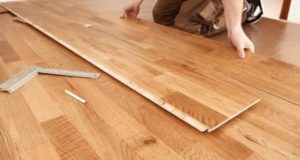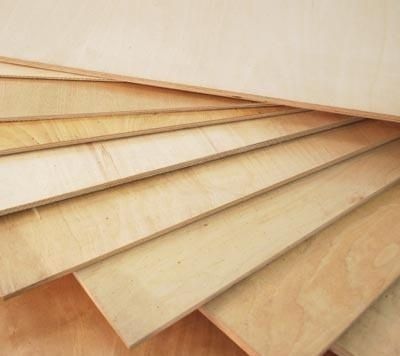Laminate restoration
The floor covering is subject to a large load and over time it loses its original appearance - swelling, chips, scratches, and abrasions appear. If multiple defects appear on the laminate, this does not mean that it urgently needs to be replaced with a new material. By carrying out minor repairs, you can give it the proper look.
The content of the article
How to remove scratches on material
 Scratches often appear on lamellas, the protective layer of which is very thin and fragile. If the defects are small, they can be eliminated by applying a special wax pencil of the appropriate shade. After this, the entire surface is well polished.
Scratches often appear on lamellas, the protective layer of which is very thin and fragile. If the defects are small, they can be eliminated by applying a special wax pencil of the appropriate shade. After this, the entire surface is well polished.
If the scratches are deep, for example, from furniture legs, then you will have to use special repair kits, which contain:
- putty – restoration wax;
- special repair putty for laminate;
- acrylic varnish.
Let's look at how to use all these devices:
- Putty - before use, it should be melted with a wax melter and applied to a clean, grease-free surface; first, cover the area next to the scratches with masking tape. Excess wax putty is removed with a damp cloth without waiting for it to dry. After the composition has completely dried, the surface is sanded with a soft cloth.
- Repair putty – often found in tubes.You need to apply it to the cracks with a special rubber spatula - remove the excess immediately with a dry cloth.
- Acrylic varnish, it is advisable to buy transparent material.
After applying repair mixtures and sanding, the repaired areas are varnished for better protection and durability.
On a note! If the defect appears in an area with a transition from dark to light color, then it is better to purchase two mastics of different shades and mix them until the desired tone is obtained. Experts advise that if you want to bring the design as close as possible to the original, after the mastic has dried and polished, apply shading to continue the pattern on the lamellas.
If the cracks are significant, then it is better to fill them with a gypsum solution to which small sawdust has been added.
What to do if the laminate is swollen
 How to repair laminate flooring? Blistering on the surface of the material can be as small as a few millimeters to 2-5 cm. The most common cause of such a defect is non-compliance with the installation technology. Specifically, the incorrect formation of a technological gap between the wall and the coating.
How to repair laminate flooring? Blistering on the surface of the material can be as small as a few millimeters to 2-5 cm. The most common cause of such a defect is non-compliance with the installation technology. Specifically, the incorrect formation of a technological gap between the wall and the coating.
In this case, it is not difficult to restore the laminate:
- remove the baseboard;
- disassemble part of the coating to the problem area;
- install the lamellas in their original place, while increasing the gap;
- install the plinth.
Advice! How to update laminate flooring at home? If the material is installed the same in all rooms, then it is necessary to install expansion joints and joints. The fact is that the microclimate in each room is different, therefore the expansion of the lamellas occurs differently.
Eliminating gaps between laminate joints
 If large gaps have formed between the planks, then restoration of the laminate is done in the following ways:
If large gaps have formed between the planks, then restoration of the laminate is done in the following ways:
- Mechanically masking the gap is the most affordable and easiest way. Often it is enough to hit the canvas with a wooden hammer in the direction of the crack;
- can be filled with a special wood filler - an excellent option for small gaps;
- if there are a lot of cracks, then all that remains is to disassemble the coating completely or partially. In this case, good lamellas are reinstalled, and defective ones are replaced with new ones.
In any case, repairing the flooring will cost much less than completely re-covering the material.
Elimination of material delamination
 If the laminate is constantly exposed to a humid environment, the lamellas may begin to delaminate (the protective film comes off), after which all layers of the material begin to swell and become unusable.
If the laminate is constantly exposed to a humid environment, the lamellas may begin to delaminate (the protective film comes off), after which all layers of the material begin to swell and become unusable.
Some home craftsmen try to correct this defect by gluing the layers with epoxy compounds, followed by clamping the lamella between clamps. But this process is long and painstaking - it does not allow increasing the durability of the material. Therefore, it is better to simply replace the floor covering with new material.
It is advisable to repair defective laminate if the damage is not severe, otherwise it is better to replace the flooring.





